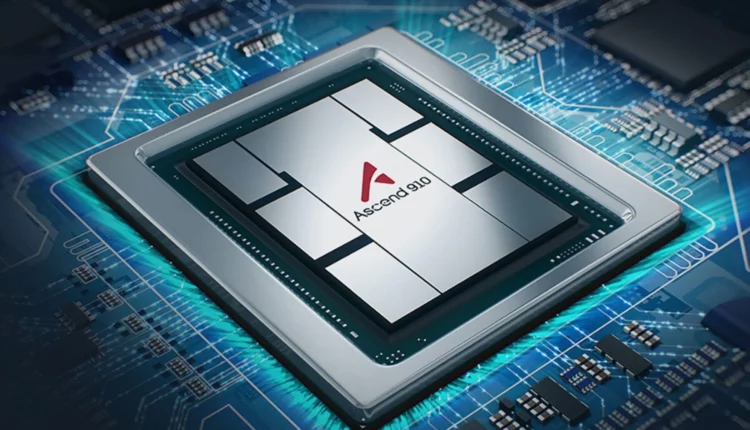©2021 Reporters Post24. All Rights Reserved.
Huawei Technologies has teamed up with Chinese foundry Wuhan Xinxin Semiconductor Manufacturing Co to develop high-bandwidth memory (HBM) chips, according to sources, as these devices have become an indispensable component in the computing infrastructure used for artificial intelligence (AI) projects.
This initiative also involves mainland integrated circuit (IC) packaging firms Jiangsu Changjiang Electronics Tech and Tongfu Microelectronics, which are tasked to provide the so-called Chip on Wafer on Substrate – an advanced packaging technology for stacking different types of semiconductors, such as graphics processing units (GPUs) and HBM chips, on a single package, the sources said.
Neither Huawei nor Wuhan Xinxin immediately replied to requests for comment on Sunday.
Do you have questions about the biggest topics and trends from around the world? Get the answers with SCMP Knowledge, our new platform of curated content with explainers, FAQs, analyses and infographics brought to you by our award-winning team.
US-blacklisted Huawei’s move into the HBM chip space would mark its latest effort to defy Washington’s tech sanctions. The Shenzhen-based company made a surprise comeback in the 5G smartphone market last August, when it released a handset powered by a 7-nanometre processor – a breakthrough that was lauded on the mainland, but sparked intense scrutiny from Washington in light of existing tech access restrictions.

A 3D rendering of high-bandwidth memory chips bundled with an advanced artificial intelligence processor on a server. Photo: Shutterstock alt=A 3D rendering of high-bandwidth memory chips bundled with an advanced artificial intelligence processor on a server. Photo: Shutterstock>
While China remains in the early stage of HBM chip development, its progress is expected to be closely watched by analysts and industry insiders amid Washington’s tech restrictions in semiconductors and AI.
In May, a Reuters report said ChangXin Memory Technologies, China’s top dynamic random access memory maker, had developed sample HBM chips in partnership with Tongfu Microelectronics. Online tech publication The Information in April reported that a group of Chinese firms, led by Huawei, are looking to ramp up domestic production of HBM chips by 2026.
Wuhan Xinxin in March released a tender for building an advanced fabrication facility for HBM chips that would produce 3,000 12-inch wafers a month. Two months later, Wuhan Xinxin filed an application to go public with the China Securities Regulatory Commission’s branch in central Hubei province.
A subsidiary of China’s top flash memory chip maker Yangtze Memory Technologies Corp, had earlier expanded its capitalisation by 46 per cent to 8.5 billion yuan (US$1.2 billion) on the back of new investors that included the state-backed China Internet Investment Fund.

Huawei Technologies’ self-developed artificial intelligence processor, the Ascend 910B. Photo: Handout alt=Huawei Technologies’ self-developed artificial intelligence processor, the Ascend 910B. Photo: Handout>
Huawei, meanwhile, has managed to promote and broaden market interest for its Ascend 910B as an alternative to Nvidia‘s A100 GPU in AI development projects on the mainland.
Huawei’s latest HBM chip initiative still has a long way to go, as the global market for these products is dominated by South Korea’s SK Hynix and Samsung Electronics – each firm controlling about a 50 per cent market share in 2024, according to data from Taiwan IC research firm TrendForce. US memory chip maker Micron Technology, has a market share of 3 to 5 per cent.
Major semiconductor design firms Nvidia and Advanced Micro Devices, as well as chip maker Intel have adopted HBM for their products, which is driving up global demand for these high-performance memory chips this year, according to TrendForce.
While demand for HBM chips continues to surge, the mainland’s semiconductor supply chain is not ready to reap the benefits of this booming market segment, according to Simon Woo, managing director and coordinator of Asia-Pacific Technology Research at Bank of America Securities, in a recent interview with the Post.
“China’s [semiconductor] supply chain is still insufficient for high-end memory fabrication, with its growth mainly focused on mid to low-end solutions,” Woo said.
This article originally appeared in the South China Morning Post (SCMP), the most authoritative voice reporting on China and Asia for more than a century. For more SCMP stories, please explore the SCMP app or visit the SCMP’s Facebook and Twitter pages. Copyright © 2024 South China Morning Post Publishers Ltd. All rights reserved.
Copyright (c) 2024. South China Morning Post Publishers Ltd. All rights reserved.


